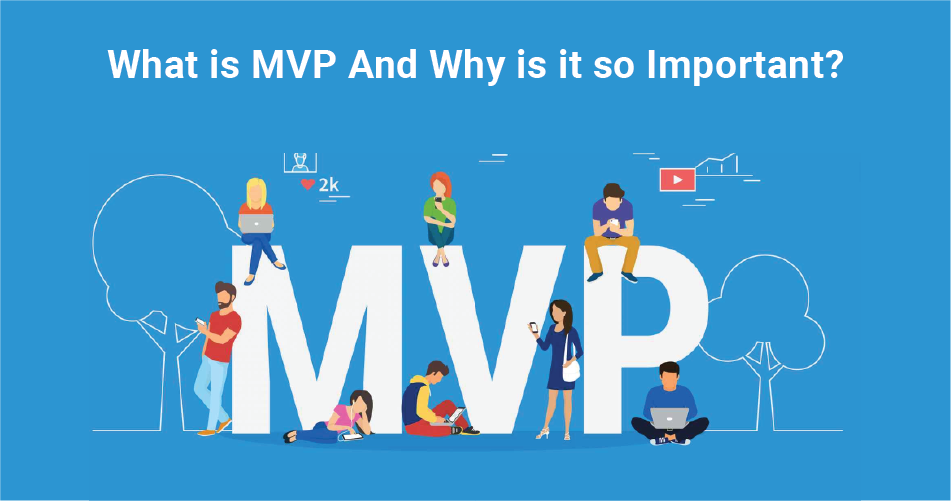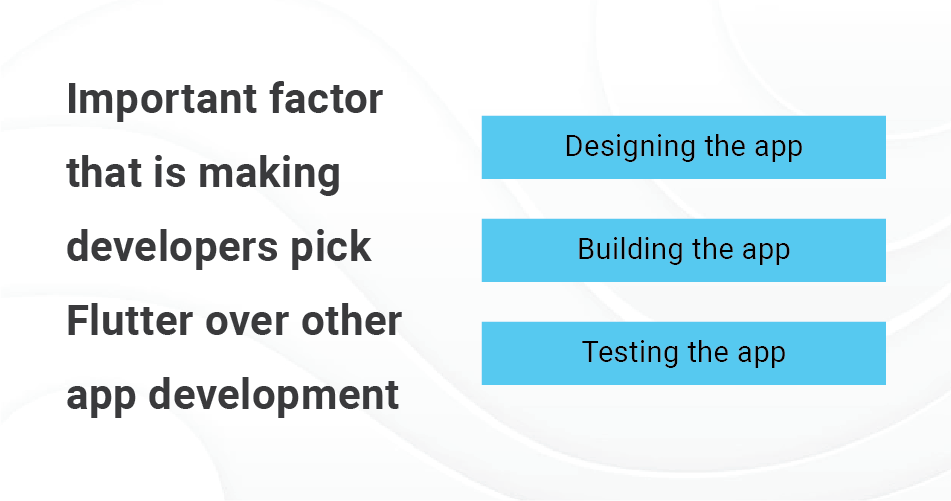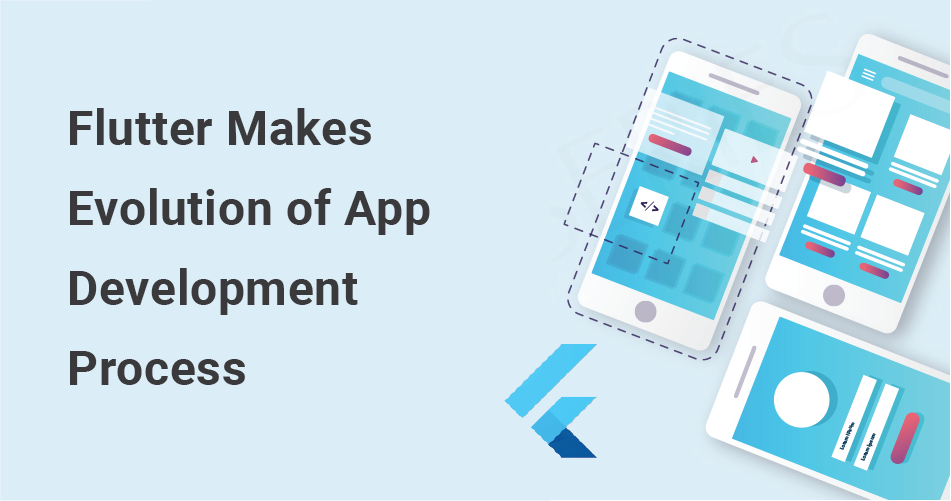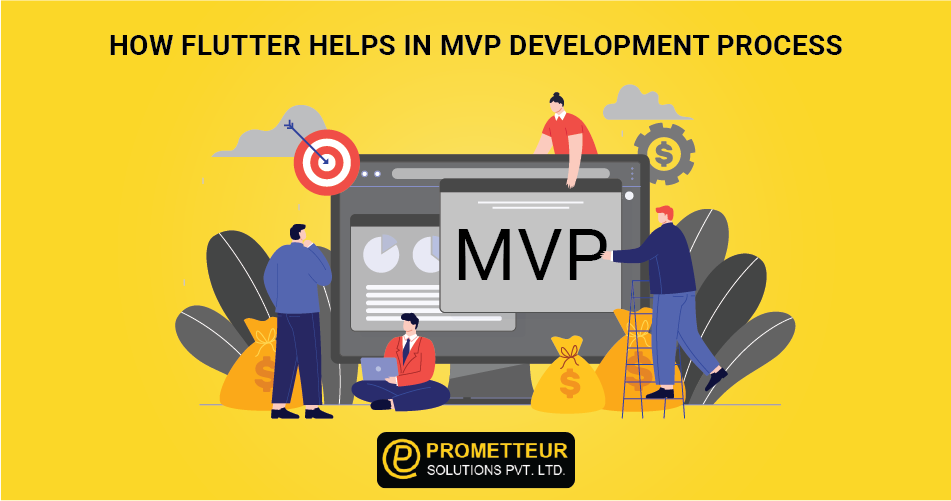The Flutter platform and a Minimum Viable Product (MVP) concept have become staples in any discussion of time-saving mobile app development solutions. Flutter compliments MVP development since it is open source. App development gets easier using Flutter, which speeds up the development process. Flutter’s interoperability with Firebase also eliminates the need for various backends when creating a basic MVP. We may debate the rest of the points below.
What Is MVP And Why is it so Important?
Minimum Viable Product (MVP) is a strategy in which a company or team introduces new features in the most basic form, with the ability to test and refine the app at an early stage.

This makes the developers identify major pain points in the app and use it as a way to bring improvements. With the use of Flutter and Firebase, MVP Development has become a very convenient approach for app developers to get their app built quickly and reduce time. If we look at iOS, the apps take six to nine months to get to the point of actual MVP while Android takes six to nine months.
With Flutter and Firebase, app development is easier and even faster and will get to the MVP Development faster. Here are a few key points on how Flutter and Firebase contribute to MVP development.
Developers see the necessity of identifying a complete product (MVP) before making an investment. More often, the lack of confidence can be reflected in the velocity with which a developer has created a product.
A Flutter application is usually developed in such a way that it doesn’t need to include an extensive code base, therefore, is also helpful for low code development. For the entrepreneur, it’s a breeze to migrate the code with the features and functions into MVP Development.
Flutter Apps can be developed on a simple architecture to quickly prototype for the customers or test the version of the application. Flutter does not require any extra boilerplate code, but with its rich features, one can generate more sophisticated Flutter apps in a fraction of the time.
So Why Flutter?
The quick development for Flutter is not restricted to a two-month gap. All the updates can be released in the next quarter and its applications could be released within a month of the release of the app. Also, Flutter focuses on making your app interactive with virtual elements, such as search bars, data boxes, and input widgets. This reduces the entry point of the developer, making them shift their focus on UI. Flutter simplifies the development process and creates a better environment for testing and debugging.
The release of Flutter for iOS has created new possibilities for Android developers to migrate their apps to iOS. Using Flutter, Flutter apps can be delivered in the fastest time as it is capable of making apps interactive within the 60-second time of adding a single line of code.
Projects like Duet are built with Flutter. Also, Flutter can be a tool for creating simple apps. Flutter developers can create UIs that are great at simulating the real world while focusing on providing a great user experience.
What Makes Flutter a Prominent Part of the App Industry?
Features of Flutter such as its support for safe and intelligent code provide companies with the ability to build complex apps in a lightning-fast time. Flutter is expected to revolutionize mobile app development by supporting a range of features that will help in the development of the best Android and iOS apps in the future.
Flutter Supports Cross-Platform Capabilities.
Flutter also uses the concept of activity -X connection between front-end code and the back-end system. Activity refers to the shared code that is executed in the same process and on the same thread in both the front and the back ends. The activity is kept synchronized and managed between the two sides. Making the connection between the back-end and the front-end enables the developers to build a complete mobile app.
Mobile App Development with Flutter
Flutter adoption is growing tremendously. In fact, Flutter is becoming the new gold standard for mobile app development and is used for the production of thousands of apps. It is changing how developers create apps on the platform by providing developers a platform with various tools, while also bringing consistency in the front-end development process, and simplifying the back-end setup. Flutter can also be used for web apps as well.

An important factor that is making developers pick Flutter over other app development frameworks is that the type of app developed with it has no limitation. With Flutter, developers need not focus on which programming language they can use or language they can write their app in.
Designing the app
Since Flutter runs on JavaScript, it has a strong concept of modularity. This means, in the long run, your app can have several views that can be pulled in from a library. In MVP development, this is especially important, especially when you don’t have time for the features mentioned above. The purpose of modularity is to divide the effort in development among modules instead of solving it within the individual ones.
You can create an app from scratch or use a tool like Flutter Native if you want a traditional Flutter application. But this doesn’t go without having a “plus” in Flutter. You can write the code for a real app in JavaScript and HTML. The interface in JavaScript is called UIButton and all the code is a normal HTML control with many attributes.
Building the app
There is no need to write everything from scratch. The IDE allows you to build a Flutter app from scratch. The Flutter App Builder allows you to build a Flutter mobile app quickly. It doesn’t require you to write so many codes or be very knowledgeable in writing codes.
You can also share your app build with team members or on the go. You can integrate custom code into your Flutter app while keeping version control, easy and secure. When it comes to test-driving a new app, you don’t need to use firebase’s Android or iOS infrastructure. Instead, Flutter provides a first-class Flutter integration with Google Cloud Firestore. Building an MVP Development Flutter offers a lot of great features to help developers have a clearer view of the app’s overall experience.
Testing the app
Flutter adopts a realistic concept and therefore, if you are building an MVP Development app, you don’t have to spend much time on optimization and checking if the app works smoothly. If you are creating the app as a Scrum team, you will have one person to handle the app at a time. And if you are going to be part of an agile development process then you can test the app with minimal effort in a few hours.
Designing UX features with Flutter isn’t rocket science. Almost all the Flutter apps are built on the principles of Material Design. Thus, there is no need for the user to adjust to different design and interactivity patterns. Thus, developers can build the app in a single-page application model and then use Flutter libraries to create the interface.
Why Is MVP So Important?
In some cases, an MVP is required in order to check if it meets the basic functionality required for a robust, mature, and stable app. The most important step before an MVP Development exists is to do thorough research on your target market and the way they would accept an app. If an MVP doesn’t work then all the money spent by the developer, app store (Google Play), and even users would go down the drain.
Flutter for MVP Development + Reduced Resources Requirements
Instead of dividing development projects into phases, code gets isolated in smaller development tasks with the help of mobile and web, requiring fewer resources. The app development process doesn’t have to be split across different mobile platforms, requiring additional energy and time. In the world of Flutter, engineers can work in a single workspace, moving through all levels of application development simultaneously. The process helps app developers to achieve 3x the speed of development.
Speed of app development is one of the biggest challenges faced by app developers. As a result that, it has turned out to be the most common reason for developers for failing to reach the audience. In the age of optimized development cycles, Flutter mitigates this. The time and effort spent in the task of creating Flutter apps can be significantly reduced
Everyone knows that the speed of app development is one of the biggest challenges faced by app developers. As a result that, it has turned out to be the most common reason for developers for failing to reach the audience. In the age of optimized development cycles, Flutter mitigates this. The time and effort spent in the task of creating Flutter apps can be significantly reduced by optimizing the development process for Flutter.
The Flow Flow of Flutter Development Is A Nuisance Free & Cutely Styled
Design is the major consideration that can aid app developers in achieving the required results. Flutter, as an open-source framework, can help in achieving fast development cycles with the help of responsive, tight code, and design. The Flutter team has adopted the Material design as the default UI kit to come with a sleek user interface and has leveraged HTML and CSS to create the Flutter apps.
Flutter users are also able to use premade templates like App Builder, App Scroll, Image Gallery, and Widget Builder. There are a host of native Flutter templates that have been developed by users and there are even more options on the Play Store and the App Store.
Flutter Makes Evolution of App Development Process

Mobile apps are currently under a big transformation that involves several technologies that aim to make them more dynamic and performant on different devices and the Flutter platform makes the development process more efficient by allowing a more dynamic, extensible, reusable UI code across different devices and screen sizes.
Flutter offers you a lot of great features, such as Performance Testing with Flutter Measurement that is yet to be heard of from other mobile app development platforms. Flutter gives you all the ability to implement responsive interfaces. And, Flutter also comes with a few neat capabilities, like full access to Android APIs and IBA. And, as you might expect, Flutter, with its free tier, is available for all developers.
As Flutter continues to evolve, it brings more features and polish. So, it is important that you understand the Flutter platform, its features, and needs. There is an opportunity to create solutions that are dynamic, scalable, performant, and streamlined in terms of process. That is why you should keep your eyes on Flutter, and the positive growth it shows.
